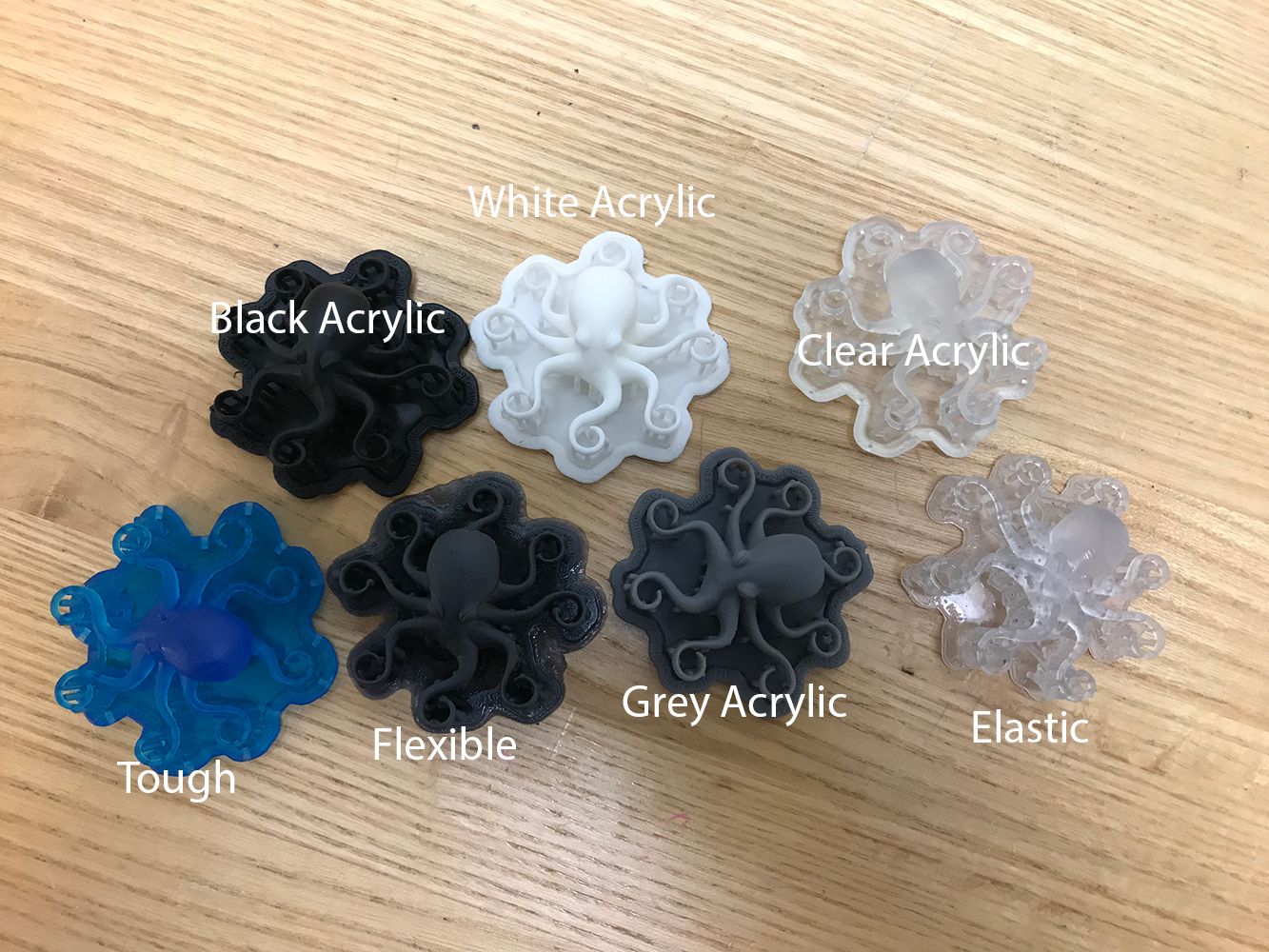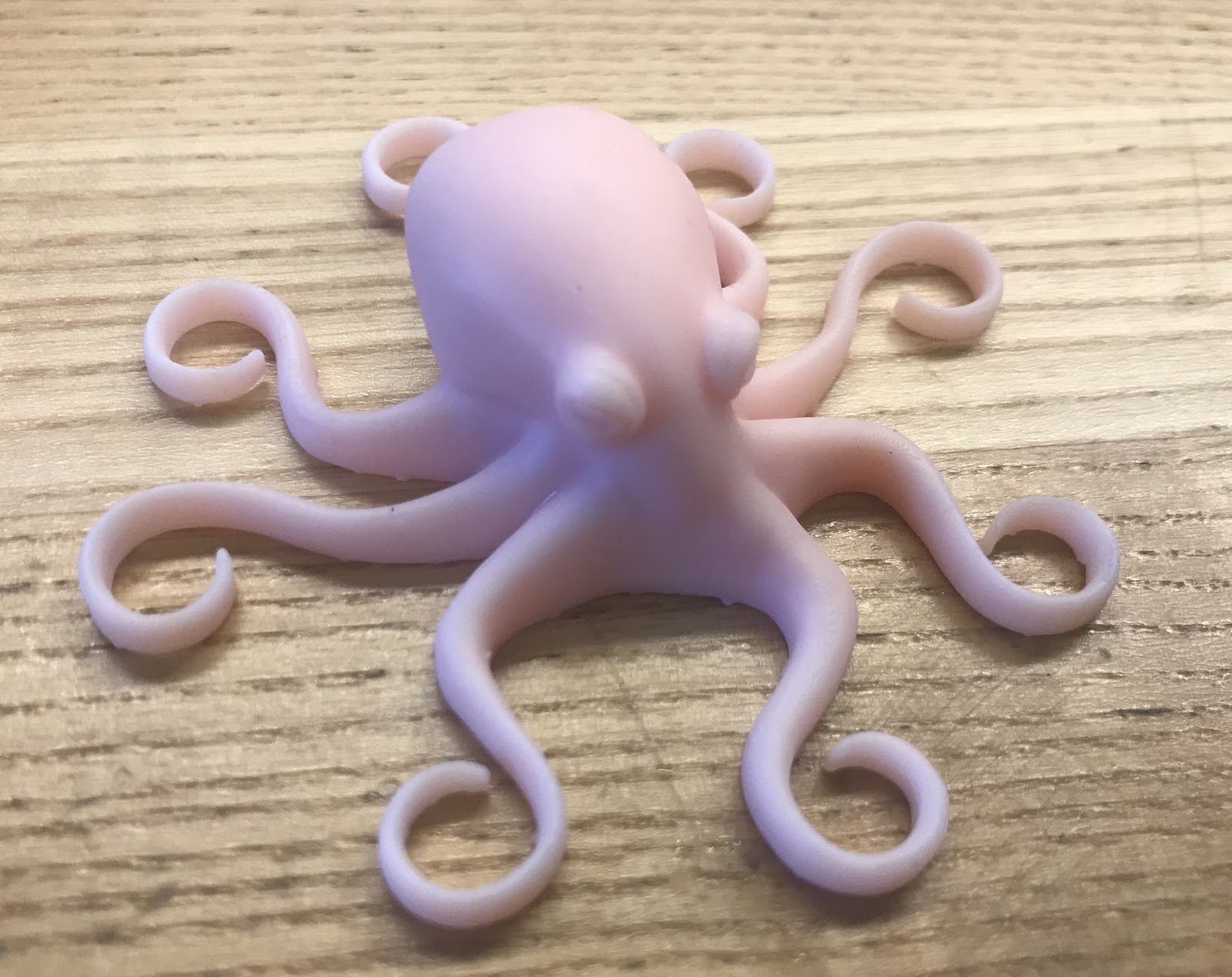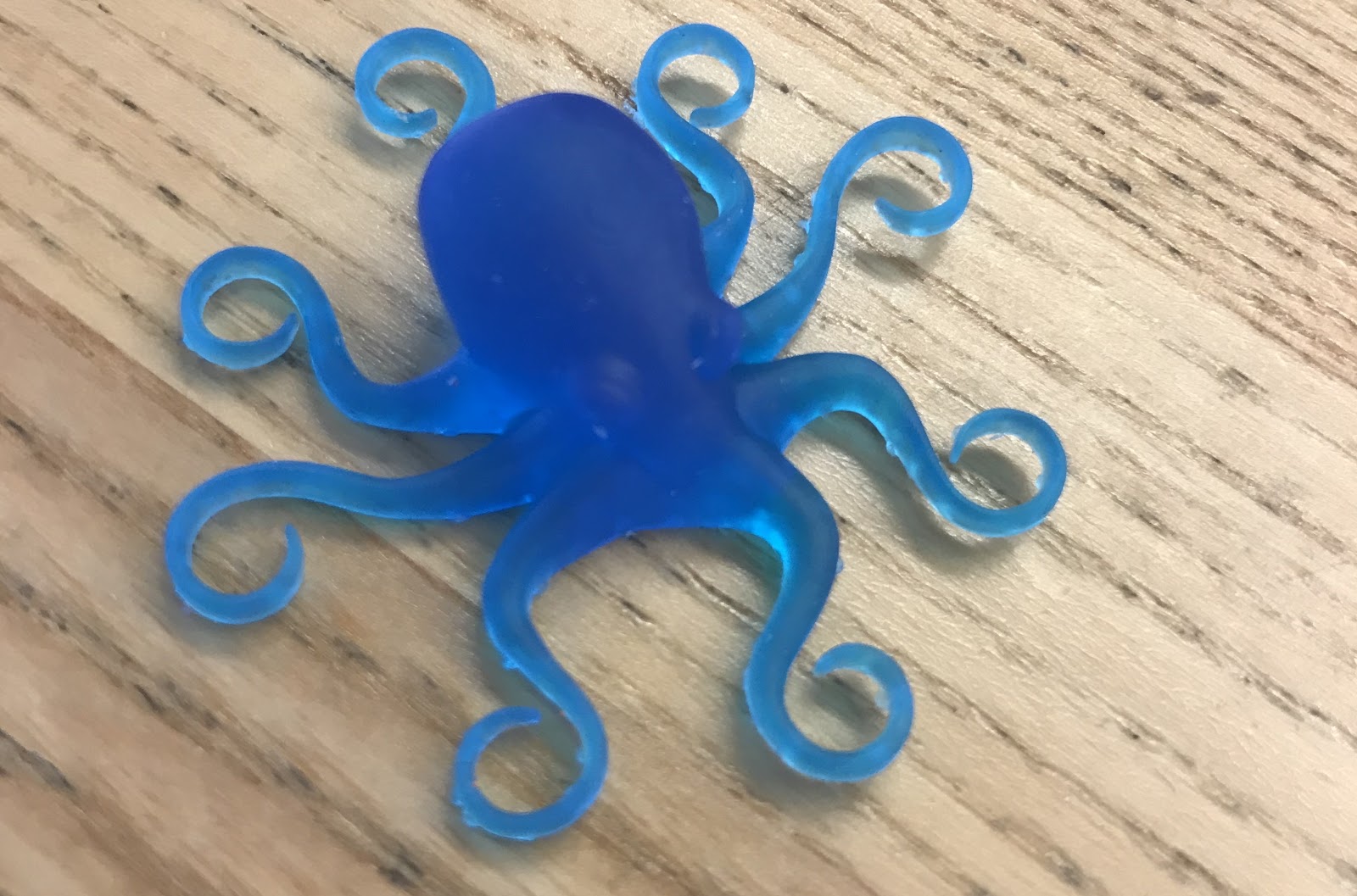Written by: Lou Najjar-Rulin
We have 4 types of 3D printers in the AOC that each use different types of material, and each one has certain applications it works best for. Probably the most versatile are the Formlabs resin printers, which we have four of at the moment. The Formlabs printers are the only ones that print your model upside down, dipping into a resin tank and curing one layer at a time, which allows it to create a scaffolding of thin support towers around your print instead of surrounding the whole underside of your model. This support style makes it easier to print detailed parts without worrying that support structures will interrupt your design, and on most of the resins they snap (or snip) off easily and the small remaining marks can be sanded down or painted over. Here, samples printed in our 7 main resins are pictured with support structures still attached.
Acrylic Resins: Various Colors
The most popular type of material we have for the Formlabs are the various acrylic-like resins. Clear, grey, white, and black are all capable of producing high quality prints and have similar material qualities, but the finish on each lends itself to different uses. Clear is almost transparent, allowing light through, while the matte finish on black and grey makes them perfect for prototyping parts with fine detail. For a part you plan to paint, white acrylic is the best base for color.
For those that don’t want to paint, acrylic resin can be mixed in a number of colors, and is the only style of resin that has this capability. If you’re interested in a custom color we will mix it for any job that requires 50ml or more. Pictured below is Peach, a custom color that is often requested. Once someone meets the minimum requirement to mix a new color, that color becomes available to everyone until it runs out.
All of the standard acrylics are stiff, but forgiving enough that they work great for pieces that need to snap together, like a part that uses a small ball joint. Support removal is fairly easy and they can be sanded and polished.
Engineering Resins: Durable, Tough, Tough 1500
Durable and tough sound like the same thing, so what’s the difference between these two resins? Both resist snapping and distortion (such as a moving part of a model warping after repeated contact or friction) but tough and tough 1500 are more forgiving, and are able to bend and then return to their previous form, which is great for parts that may undergo stress but need to maintain their shape.
Durable on the other hand is more unyielding, and its high impact strength makes it ideal for parts that must withstand friction, such as a gears that will constantly grind against each other or prototypes for objects that need to survive a certain amount of deformation before they’re broken or destroyed, like a car bumper or the connector for a removable crank. All three of these materials have the capacity for high quality prints, and can be sanded, polished, and painted.
The durable is similar looking to the clear acrylic resin, but tough is a teal color.
Flexible and Elastic Resins:
Flexible and elastic resins are both good options for soft parts that will be bent or compressed and must return to their previous form. I used our flexible resin last semester to print rubber tips for a pair of supersized earbuds, but it has many more functional applications as well, such as creating a rubber-like seal, a handle or grip, or it can even be used for shock absorption.
Elastic is even softer than flexible, and has the ability to stretch some and then bounce back to its original shape. It is malleable enough to be used for wearables, such as shoe straps. Because the resulting parts are so soft, support cleanup can be more difficult with elastic than any of the harder resins. Some details will be harder to see than with clear acrylic, which has a similar opacity, but no other resin is as soft, making it a great option for certain toys, handles, straps, and items that need to be compressible, like a cover for a button.
Neither flexible nor acrylic can be sanded very easily, and the paints you would use for acrylic parts may not work on these materials, but it is possible with patience and some experimenting.







